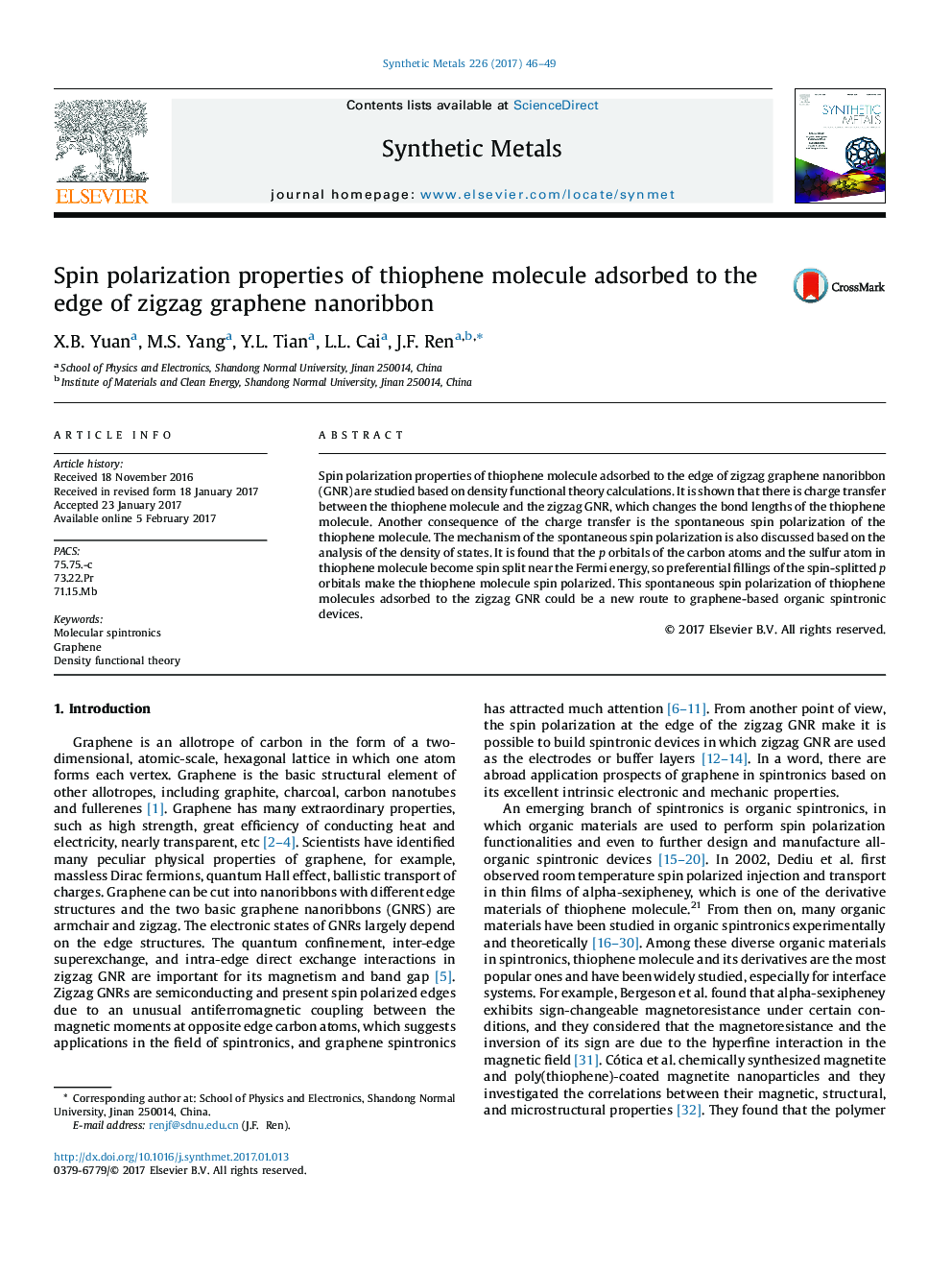| کد مقاله | کد نشریه | سال انتشار | مقاله انگلیسی | نسخه تمام متن |
|---|---|---|---|---|
| 5435475 | 1509352 | 2017 | 4 صفحه PDF | دانلود رایگان |
- Thiophene molecule is spin-polarized when edge-adsorbed to zigzag graphene nanoribbon.
- Transferred charges make the molecule bond lengths change so the system become asymmetric.
- Spin polarization of the molecule arises from a preferably filling of spin-splitted p orbitals.
Spin polarization properties of thiophene molecule adsorbed to the edge of zigzag graphene nanoribbon (GNR) are studied based on density functional theory calculations. It is shown that there is charge transfer between the thiophene molecule and the zigzag GNR, which changes the bond lengths of the thiophene molecule. Another consequence of the charge transfer is the spontaneous spin polarization of the thiophene molecule. The mechanism of the spontaneous spin polarization is also discussed based on the analysis of the density of states. It is found that the p orbitals of the carbon atoms and the sulfur atom in thiophene molecule become spin split near the Fermi energy, so preferential fillings of the spin-splitted p orbitals make the thiophene molecule spin polarized. This spontaneous spin polarization of thiophene molecules adsorbed to the zigzag GNR could be a new route to graphene-based organic spintronic devices.
Spin density distributions for the system in which thiophene molecule is edge-adsorbed to H-saturated zigzag graphene nanoribbon based on density functional theory calculations. It is clear from the figure that the thiophene molecule is spin polarized. There is charge transfer between thiophene molecule and zigzag graphene nanoribbon and this charge transfer induces the spin polarization of the molecule. The transferred charge will preferentially fill spin-splitted p orbitals in the thiophene molecule near the Fermi energy, which makes the molecule spin polarized due to the different occupations of up and down spins.180
Journal: Synthetic Metals - Volume 226, April 2017, Pages 46-49
